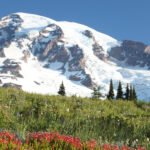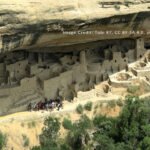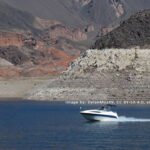Discover the wonders of Everglades National Park in Florida. Learn about its rich history, diverse wildlife, top attractions, activities, accommodations, weather, visitor tips, and ongoing conservation efforts.
Table of Contents
Introduction to Everglades National Park
Everglades National Park, located in southern Florida, is one of the most unique and captivating natural reserves in the United States. Spanning over 1.5 million acres, the park is a haven for biodiversity, featuring a mix of freshwater and saltwater ecosystems, swamps, and sawgrass marshes. Known for its extensive wildlife, including the American alligator, the park is a UNESCO World Heritage Site and an International Biosphere Reserve. Visitors flock to this natural wonder to experience its rich ecology, breathtaking landscapes, and a myriad of outdoor activities.
History and Background
The history of Everglades National Park is a tale of environmental conservation and cultural significance. Originally inhabited by Native American tribes such as the Calusa and the Seminole, the Everglades have long been a crucial part of Florida’s natural heritage. In the early 20th century, efforts to drain the wetlands for development led to significant ecological damage. Recognizing the need to preserve this unique ecosystem, the park was established in 1947. Today, it stands as a testament to successful environmental protection and restoration efforts, providing habitat for numerous endangered species.
Biodiversity
Everglades National Park boasts an extraordinary array of flora and fauna, making it a paradise for nature enthusiasts and biologists alike. The park is home to more than 350 bird species, including the iconic roseate spoonbill and the elusive snail kite. Aquatic life thrives in its waters, with species such as the American crocodile and West Indian manatee making their home here. The diverse plant life ranges from mangroves and sawgrass to tropical hardwood hammocks, creating a mosaic of habitats that support a wide variety of life forms. This incredible biodiversity is a key reason the Everglades are often referred to as the “River of Grass.”
Famous Attractions
Several iconic attractions make Everglades National Park a must-visit destination. The Anhinga Trail offers a close-up view of the park’s wildlife, including alligators, herons, and turtles. For those seeking a panoramic view, the Shark Valley Observation Tower provides stunning vistas of the expansive sawgrass prairies. Another highlight is the Flamingo Visitor Center, where visitors can embark on boat tours to explore the mangrove ecosystems and spot dolphins, crocodiles, and manatees. These attractions, among others, offer unparalleled opportunities to experience the natural beauty and wildlife of the Everglades.
Activities
Outdoor enthusiasts will find no shortage of activities in Everglades National Park. Popular activities include hiking, with trails like the Gumbo Limbo Trail and Mahogany Hammock Trail offering immersive experiences through diverse habitats. Birdwatching is a major draw, with prime spots like the Paurotis Pond attracting bird lovers from around the globe. Kayaking and canoeing through the park’s waterways provide a serene way to explore its aquatic environments. Additionally, airboat tours offer a thrilling ride through the wetlands, combining speed and the chance to see wildlife up close.
Accommodations
Visitors to Everglades National Park have various accommodation options to suit their preferences. Camping is a popular choice, with several campgrounds such as Long Pine Key and Flamingo offering tent and RV sites amidst the park’s natural beauty. For those seeking more comfort, nearby towns like Homestead and Florida City provide a range of hotels, motels, and vacation rentals. Additionally, the park offers backcountry camping for the more adventurous, allowing for a truly immersive wilderness experience.
Weather Conditions
Understanding the weather is crucial for planning a visit to Everglades National Park. The park experiences a subtropical climate with two distinct seasons: the dry season (November to April) and the wet season (May to October). The dry season is the most popular time to visit, offering mild temperatures and lower humidity, making it ideal for outdoor activities. The wet season brings higher temperatures, frequent thunderstorms, and potential flooding, but it also results in lush landscapes and vibrant wildlife activity. Visitors should prepare accordingly, with appropriate clothing, hydration, and sun protection.
Visitor Information
Everglades National Park is open year-round, with visitor centers providing essential information and services. The Ernest F. Coe Visitor Center and the Gulf Coast Visitor Center are excellent starting points, offering exhibits, maps, and ranger-led programs. Entrance fees apply, with various passes available for frequent visitors. It’s recommended to check the park’s official website for current conditions, park alerts, and any special events or activities. Accessibility is well-considered, with several trails and facilities designed to accommodate visitors with disabilities.
Conservation Efforts
Conservation is at the heart of Everglades National Park’s mission. The park faces ongoing challenges, including habitat loss, invasive species, and water quality issues. Numerous restoration projects are underway, aiming to restore natural water flow, remove invasive species, and protect native habitats. Partnerships with environmental organizations, government agencies, and local communities play a crucial role in these efforts. Education and research initiatives are also integral, helping to raise awareness and foster a deeper understanding of the park’s ecological significance.
Tips for Visiting
- Arrive early to avoid crowds and catch the best wildlife viewing opportunities.
- Wear comfortable clothing and sturdy shoes suitable for hiking and exploring.
- Bring insect repellent, sunscreen, and plenty of water, especially during the hotter months.
- Respect wildlife and maintain a safe distance; never feed or approach animals.
- Take advantage of ranger-led programs and guided tours for deeper insights into the park’s ecology and history.
- Plan your visit during the dry season for the best weather conditions.
For more information about Everglades National Park, visit the official National Park Service website at Click Here.
Everglades National Park is a jewel of Florida’s natural heritage, offering visitors a chance to immerse themselves in one of the most diverse ecosystems in the world. From its rich history and incredible biodiversity to its iconic attractions and extensive recreational opportunities, the park provides a unique and memorable experience. Ongoing conservation efforts ensure that this natural wonder remains protected for future generations. Whether you are a nature lover, an adventure seeker, or simply looking to escape into the wild, Everglades National Park promises an unforgettable journey into the heart of Florida’s wilderness.
You may also like DISCOVERING BISCAYNE NATIONAL PARK: FLORIDA’S HIDDEN GEM








1 thought on “Exploring Everglades National Park: A Comprehensive Guide to Florida’s Natural Wonder”